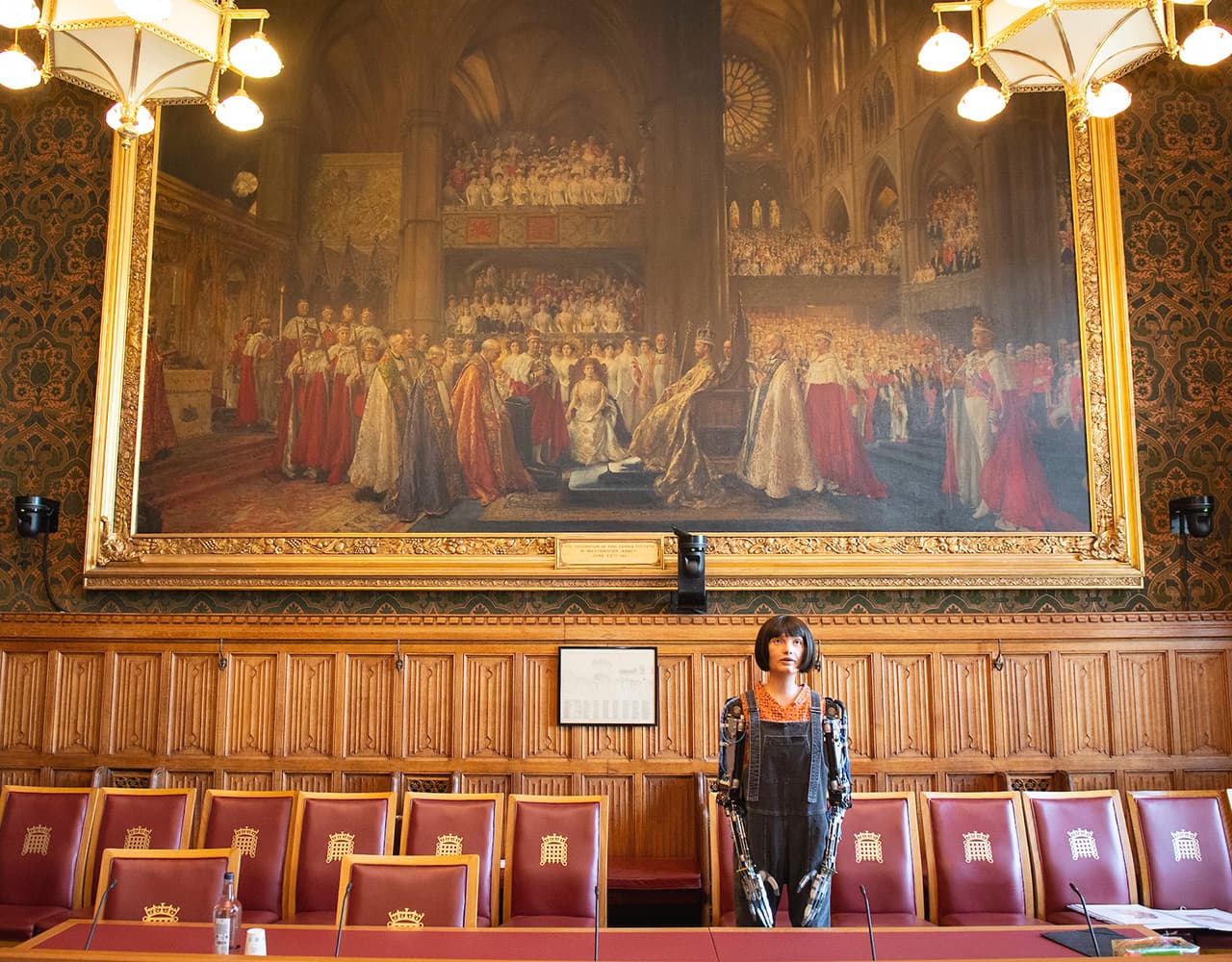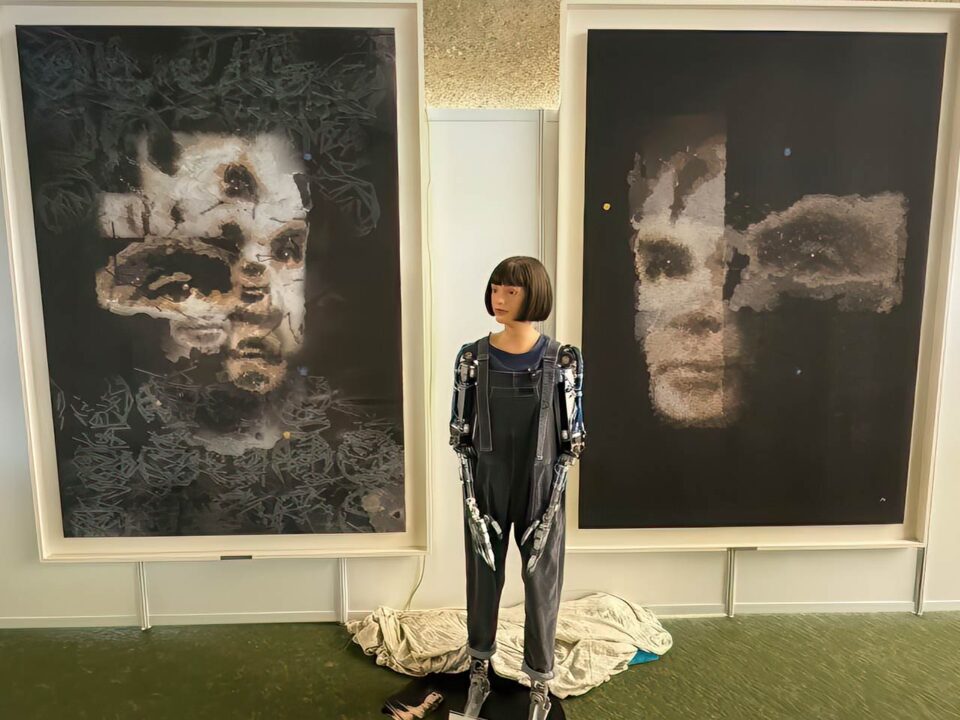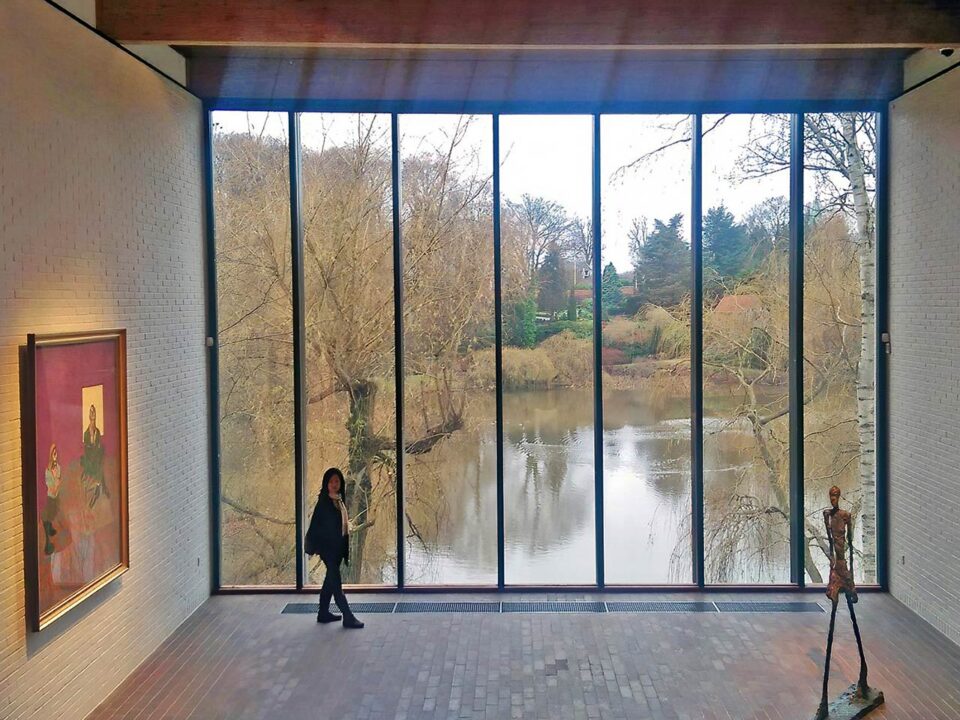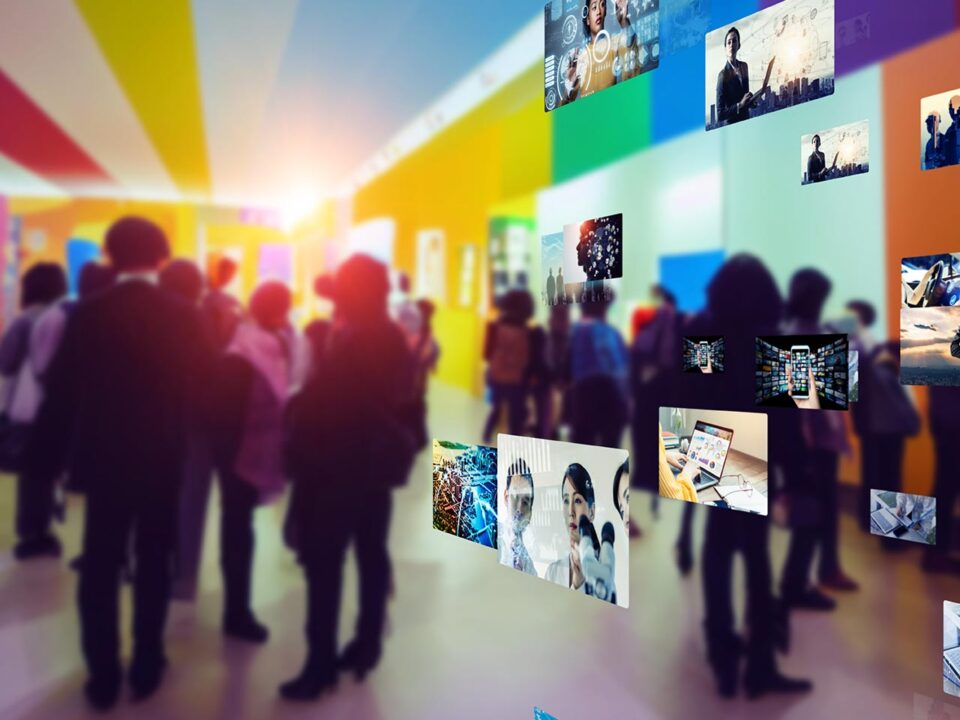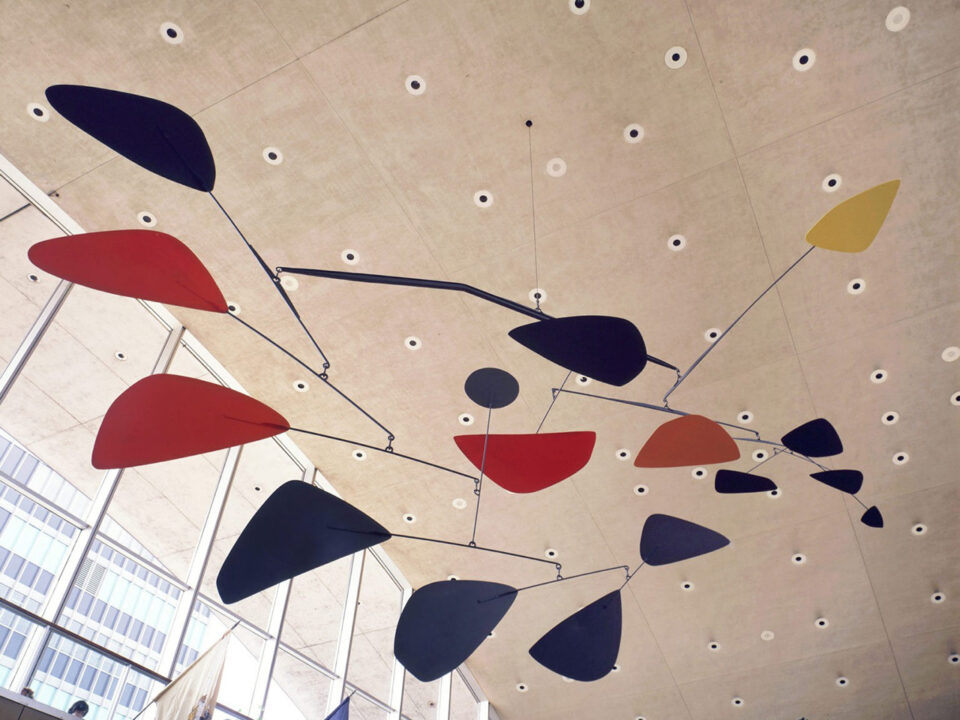The painting, a tribute to the late computer scientist Alan Turing, is expected to sell for at least $120k.
In a groundbreaking moment for the art world, Sotheby’s is set to auction the first-ever non-digital painting created by a humanoid robot. The painting, a portrait of the renowned computer scientist Alan Turing, is expected to fetch at least $120,000 and a maximum of $180,000. This sale marks the first time a robot-created physical artwork will be sold alongside pieces from human artists in a high-profile marketplace like Sotheby’s.
The artist in question is Ai-Da, an ultra-realistic humanoid robot named after the mathematician Ada Lovelace. Created by British gallerist Aidan Meller, Ai-Da was developed in collaboration with the robot manufacturer Engineered Arts and the University of Oxford. Ai-Da’s creation is a blend of technology and artistry, designed to challenge and expand the boundaries of what art can be in an age of increasing artificial intelligence.
Ai-Da’s Unique Artistry
Ai-Da has been making waves in the art community since her debut in 2019. Described as "the world’s first ultra-realistic robot artist", she has produced a series of works, mostly portraits, that incorporate fine, detailed linework. Her portraits include both real and imagined subjects, among them famous figures such as the late Queen Elizabeth II, King Charles III, Paul McCartney, and Billie Eilish. However, it is her latest work, a 7-foot-tall portrait of Alan Turing, that has garnered the most attention.
Titled "AI God", the painting was originally part of a series of five. It pays tribute to Turing’s pivotal contributions to computing and artificial intelligence, which laid the groundwork for many modern technological innovations. The portrait was displayed earlier this year at the United Nations "AI for Good" Global Summit, where it attracted widespread interest. Ai-Da’s ability to create complex, human-like art raises important questions about the future role of AI in creative fields.
The Impact of AI in Art
The sale of Ai-Da’s painting comes at a time when AI-generated art is sparking debate across creative communities. When an AI-generated piece won first place in an art competition in 2022, the reaction was mixed—ranging from confusion to outrage. Some questioned whether AI-generated work should be classified as legitimate art, and many feared that AI might eventually undermine the value of human creativity.
Ai-Da’s work adds to this ongoing conversation. She is designed not only to create but also to provoke thought about the intersection of technology and art. Her very existence blurs the lines between human and machine creativity, raising the question: Can art produced by a robot hold the same emotional or intellectual value as art created by a human?
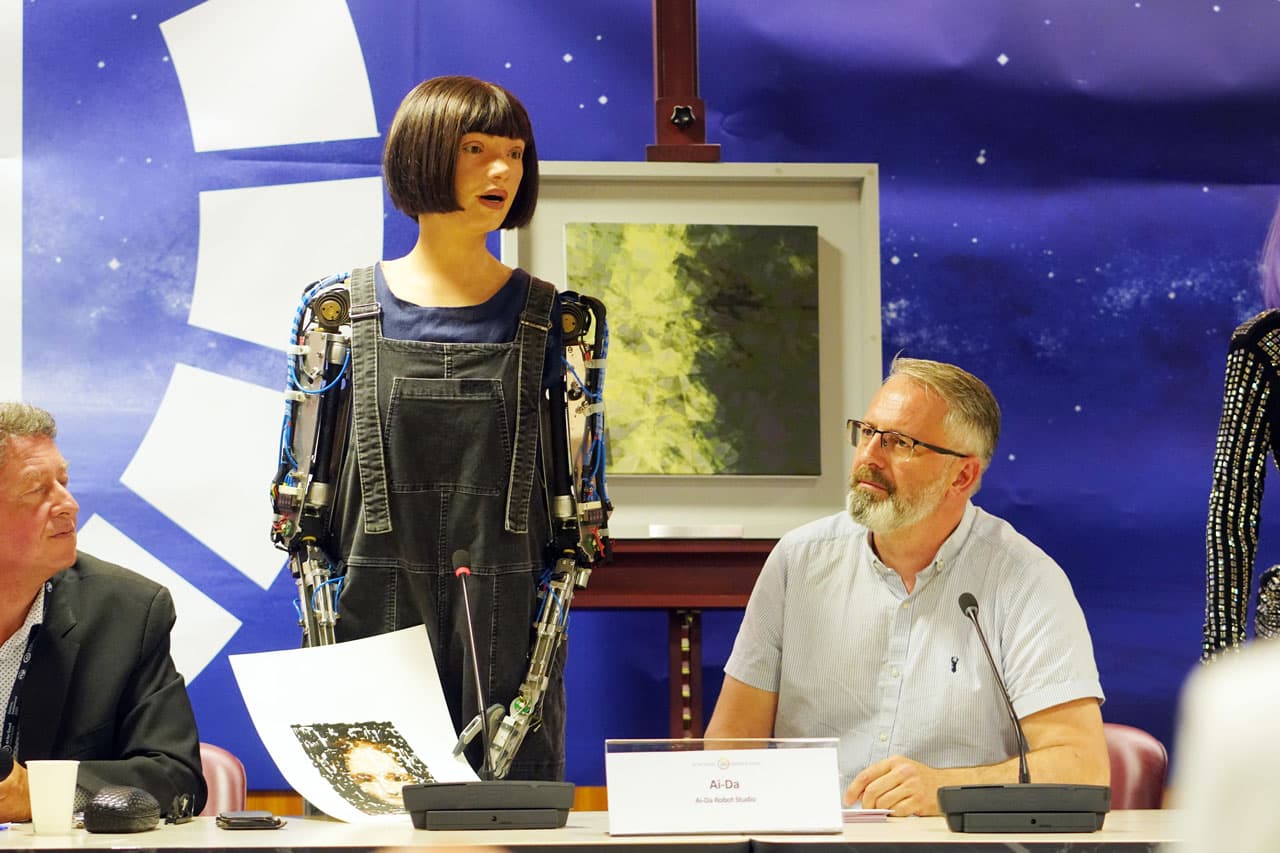
Aidan Meller presents Ai-Da Robot, the first AI powered Robot Artist during the UN Global Summit on AI for Good. Photo by Johannes Simon/Getty Images for Aidan Meller.
For Ai-Da’s creator, Aidan Meller, the goal is not to replace human artists but to explore how AI can exist in harmony with human creativity. "Ai-Da highlights the tension between our increasingly digital and physical worlds,” Meller explains. In a world dominated by avatars, chatbots, and digital assistants, Ai-Da serves as a reminder of the complex interplay between the digital and human realms. Her work underscores the growing presence of AI in every aspect of our lives, including art.
A Landmark Auction
Sotheby’s auctioning of Ai-Da’s painting marks a turning point for the art world. This sale brings into sharp focus the changing nature of art in the 21st century, where AI and technology are becoming integral tools for creative expression. With a starting price of $120,000, “AI God” is set to become a piece of history—not just for its depiction of a pioneering computer scientist, but also for being the first physical painting by a humanoid robot to be sold at such a prestigious auction house.
For those interested in purchasing the work, Sotheby’s will open bidding on October 31. The auction will also accept cryptocurrency, highlighting the merging of traditional and digital worlds in this new era of art commerce.
What This Means for the Future
As AI continues to evolve, its role in art will likely expand. Ai-Da represents a new frontier in creative expression, where robots and algorithms collaborate with human input to produce something uniquely new. While some may resist the presence of AI in art, others see it as an opportunity to redefine what art can be.
Regardless of where one stands in the debate, Ai-Da’s work is undeniably thought-provoking. Her ability to challenge the conventional boundaries of art and technology makes her an important figure in the ongoing dialogue about the future of creativity. Whether you view her as a novelty or as a legitimate artist, Ai-Da is helping to shape a new understanding of art in the digital age.
With her work now making its way to Sotheby’s, the art world will soon have its chance to weigh in on the value of robot-created art. How collectors respond to Ai-Da’s auction may set the tone for future discussions about the role of AI in art.
Featured photo: AI robot Ai-Da prior to giving evidence to a House of Lords inquiry where she will answer questions concerning tech and creativity. The House of Lords, Palace of Westminster, London. Photograph by Elliott Franks.
That's it for today! If you're interested in more design insights, make sure to check out other posts here on Art+Media+Design.
